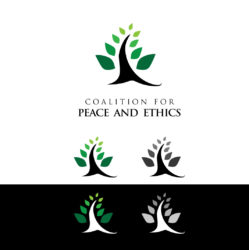The Council for Peace and Ethic’s Statement of Ethical Principles consists of twenty-one principles, which together comprise the foundations of a positive system for all human behavior. The Principles are not meant to provide answers to specific questions. Instead, the Principles provide the guidance necessary for determining what is the ethically correct or acceptable approach to a problem, a decision, a relationship, an approach or a decision. This guidance is as useful for individuals as it is for institutions. It provides a basis for appropriate behavior for individual or institutional behavior with a social, political, economic, cultural or religious dimension. It is an ethics without grounding in any specific theology, political, cultural, social, or ethnic framework. Yet it is also an ethics that can be used to inform questions about behavior that remain true to the foundational belies structures of any religious, ethnic, social, cultural or political system, of beliefs.
To help understand the broadness and interrelationship of these Principles, CPE offers the following commentary. The Commentary is meant to provide a basis for the reflection necessary for the proper application of the Principles, either as a stand-alone system of ethical principles or as a means of arriving at the appropriate understanding of any other system of individual or institutional behavior. No single principle is capable of application alone. Each acts on, contextualizes, limits, or expands an understanding of the others. Ethical systems are based on context and comparison. This one is grounded in both mechanics.
1. Do no harm. The so-called “harm principle” is well known. But the CEP means to take it in a different direction. Harm is not an absolute concept; its essence is contextual and comparative. Harm is also not meant to serve neither as a proxy for narcissism or self-destructive altruism; harm is to be measured as against all people that might be affected by a behavior or choice.
2. Resist harm directed from others. Ethics is not a prescription for passivity. The CEP abhors pietism and rejects the validity of the so-called passive virtues. This is meant to be a muscular ethics. Everyone has permission to resist harm from others and to guard against harm to oneself.
3. Control yourself. All humans, and human institutions, have a great thirst for control. Much evil has followed—from systems of compulsion, to ethics of subordination, to politics of difference. But control is best directed inward rather than outward. The great goal of a personal or institutional ethics ought to be to acquire a complete self-control.
4. Resist controlling others. People and institutions unable to control themselves sometimes seek to control others. People and institutions with a great degree of self control seek to extend those systems of control to others as well. No individual ought to be required to accept control by others, to giver herself to others unwillingly or through trickery. No person or institution ought to engage in behavior that is meant to assert an unwanted dominion over another.
5. Respect power. Some assertions of power ought to be respected. Legitimate authority is always worthy of the presumption of respect, unless it seeks to act in ways that are not rightful. Power as strength, power as potential, power as personal force is essential for creating and legitimating communities able to maximize the worth of all of its members and for developing individual potential.
6. Share power. Power serves best when shared. Fracturing power legitimates its use. Every action ought to reflect the shared power from which such actions originate and through which it acquires legitimacy.
7. Nurture power. Power that is not cultivated can neither be shared nor respected. Individuals and institutions must cultivate their own power, a power mastered through self-control.
8. Accept the limitations of membership in communities. Membership in a community should constitute a constantly renewed positive embrace of the behavior rules, values and norms of that community. Acceptance is both positive and critical, that is self-reflective. Membership is voluntary. It is renewed and affirmed in every instance in which its behavior rules, values and norms are observed. It can be freely abandoned.
9. Resist abuses of community authority. Authority may not be imposed. It cannot be legitimately commanded. Authority may be given, it cannot be taken. Authority may not be exercised for its own benefit. Authority that is exercised for the benefit someone or entity other than the person or entity on whose behalf it is exercised is illegitimate.. Power exercised without consent is illegitimate. Both must be resisted.
10. Seek harmony. Agreement, accord, harmonization, synchronization all touch on aspects of this value. Yet harmony is more than that. Harmony is an assertive state, a positive behavior. Harmony does not occur, it is made, it is maintained, it is protected, it is exposed.
11. Seek balance. Equilibrium, equipoise, stability, steadiness are all aspects of balance. Each cuts in different ways. All impose on an individual and groups the obligation of judgment; balance is a constant act of weighing,
12. Communicate. Communication is not merely speaking—that is merely the art of making noise. Communication must be received. The hearer must understand it. But the speaker must also understand it. And communication is more than speaking—a glance, a gesture, a movement, a writing, a picture. Communication, like a heart beat, is constant and difficult to control. Communication without direction is aesthetic. Aesthetics add beauty. Still, there is a place for purposeful communication as well.
13. Avoid coercing behavior. Like control, coercion is an aggressive, illegitimate and abusive act. It seeks to subordinate, to bend another to a superior will, an overarching power. Coercion is control through subterfuge.
14. Resist coercing behavior in others. Behavior that is abusive when you engage in it is no less abusive when it is done to you. There is never an obligation to affirm or conform to coercing behavior. There is an obligation to resist such behavior in others.
15. Find common ground. Individuals and entities interact. Interaction ought to benefit. Benefit is maximized when individuals work to seek or from common ground. There need not be a lot of it—just enough will do.
16. Respect difference. All people and entities are independent—or at least separate from each other. Each ought to be autonomous and self-aware and understand oneself as unique. Uniqueness has a consequence in context—difference. Difference is not a value; difference is a condition. Respect for this condition constitutes respect for oneself. Self-respect is the foundation of respect for others.
17. Avoid abuse of difference. Respect for difference is earned. Respect is lost when difference ceases to be a condition and becomes a means or ends. Difference is important only when culturally significant. Cultural significance is voluntary and malleable. Its pursuit is inconsistent with finding common ground.
18. Empathize. To step into the shoes of another, to see through their eyes, to experience the weight of their perspectives, to understand the relationship between them and the world is to bring one closer to others. Empathy connects.
19. Resist surrendering identity to others. Empathy helps purposive communication and the maintenance of common ground. But empathy is not surrender. Surrender of individual autonomy is a subordination of the self to another. One can empathize and remain to true to oneself. One can empathize and judge.
20. Peace is the ultimate value. Peace in all its senses is that state through which all individuals and entities may achieve the greatest measure of earthly good.
21. Coerced peace is the betrayal of all values. Peace cannot be purchased; peace cannot be coerced. Peace is not a gesture. It is not the product of policing or obedience born of fear. All of that signifies the triumph of evil; it is the hallmark of an illegitimate, subordinating tendency that would compel the surrender of identity, independence and free will bent to the purposes of another. Coerced peace is conflict by another name. It is to be resisted with every available means.

